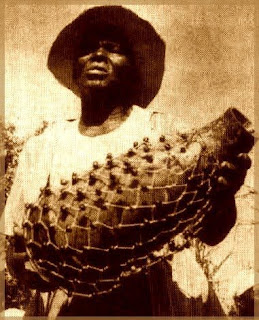 I've been playing out with my set of Skin on Skin congas pretty frequently lately and I missed the fact that they didn't have any handles. So I called up Jay Bereck and his apprentice Josh in New York and asked them about it. Jay Bereck doesn't actually make handles for his congas, but he has installed them on his Skin on Skin congas before. Jay Bereck is always an amazing man to talk to. He told me how Ray Barretto would bring him handles from whatever congas he had just broke or whatever to have installed on Skin on Skin congas Jay had made for him.
I've been playing out with my set of Skin on Skin congas pretty frequently lately and I missed the fact that they didn't have any handles. So I called up Jay Bereck and his apprentice Josh in New York and asked them about it. Jay Bereck doesn't actually make handles for his congas, but he has installed them on his Skin on Skin congas before. Jay Bereck is always an amazing man to talk to. He told me how Ray Barretto would bring him handles from whatever congas he had just broke or whatever to have installed on Skin on Skin congas Jay had made for him.Skin on Skin congas are probably the best congas being made. The design is so clean and advanced. So to say it was a bit daunting to drill some holes into my beautiful perfect congas is a bit of an understatement; I was terrified.
Anyways, I eventually found the right handle: a stainless steel handle from Ace Hardware that matched the stainless steel bands the Skin on Skin congas come with, and after some careful measuring and planning the handles went on straight and strong. I guess all those years of Architecture school were worth it, eh?
I'm really happy with how it turned out. I had inspiration and some advice from Mark Sanders over at Fidel's Eyeglasses . He actually had owned a Skin on Skin requinto that he recently sold with a handle installed by Jay Bereck, the only picture I've seen of a Skin on Skin conga with a handle, which encouraged me with my project. I'm kind of wishing I had bought this little drum when he sold it a while back. So cool!
So my conga project is done, the handles work great, and I'm really happy to have them. It makes moving the congas around much easier. Jay provided me with some really excellent instructions. and I kind of like how they look a little more now. They have an old school look like the Vergara and Junior Tirado congas you see in pictures.
Skin On Skin Hand Made Congas
(607) 639-2417
1618 State Highway 41
Afton, NY 13730
Afton, NY 13730


























































